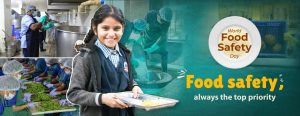
When the world’s leaders met at the dawn of the new millennia, they came together with a single unifying aim: ‘[to ensure] human development reaches everyone, everywhere.” With this in mind, they adopted the Millennium Development Goals (MDGs) in the year 2000. Designed to tackle the multifaceted problem of poverty in all its aspects, these goals are concrete, time-bound, benchmarks that provide a common framework for all countries and guide them to achieve specific targets by 2015.
There are a total of 8 goals which deal with income poverty, hunger, maternal and child mortality, disease, inadequate shelter, gender inequality, environmental degradation and the Global Partnership for Development. If these goals are met, world poverty will be halved, millions of lives will be saved and many more people will be able to benefit from the global economy.
Once established, the MDGs triggered large numbers of people across nations coming together to make these aims a reality. Many charities around the world have been consistently working for just this purpose.
The Akshaya Patra Foundation is one such non-profit charity for children. Founded in the year that the goals were adopted, it has been actively working to achieve many of the targets set by India for nearly ten years.
In particular, Akshaya Patra has been working to accomplish India’s aims to reduce the number of people suffering from hunger, ensure that children everywhere will be able to complete a full course of primary education, eliminate gender disparity and make available the benefits of new technologies in co-operation with the private sector.
Akshaya Patra’s school mid-day meal program is a unique example of what can be accomplished with the co-operative efforts of not only the Government, but corporate and individuals who really wish to bring about lasting change. Over the past ten years, the Foundation’s formula for success has resulted in the program growing from a small endeavor to a massive scale movement that reaches out to nearly 1.2 million children across India.
So what is Akshaya Patra’s formula? How is the Foundation able to do this?
“It boils down to the kindness and commitment of all the people who support us. This, along with the program we implement has been the real cause of our success.” says Madhu Pandit Dasa, the Chairman of Akshaya Patra.
This charity for children provides students in Government schools with at least one school meal per day on all school days. The meal acts as an incentive to bring children back to school, thereby encouraging education.
Studies conducted on impact by A C Nielsen ORG MARG Pvt. Ltd indicate remarkable results. Student attendance and enrolment in some places has risen by as much as 40%. The program has also increased the percentage of girl children attending school, thereby helping eliminate gender inequality. This program not only addresses the dire need for food faced by India’s malnourished millions, but also the problem of educating the country’s underprivileged children.
With many such organizations working towards accomplishing the Millennium Development Goals, the question remains as to how far we have come. There are just 5 years left till the deadline. Is the world on track to meet its goals?
According to the latest United Nations Development Program, there has already been considerable progress. The goal of halving poverty is in fact within reach.
However, it also points out the areas for concern. Many goals might be missed if action is not taken urgently. One quarter of all children in developing countries are considered to be underweight and at risk of long-term effects of undernourishment. More than half a million prospective mothers in developing countries die annually in childbirth or complications of pregnancy. In many middle income countries, there are ‘pockets of poverty’ that will need specific attention.
The world is gearing up to evaluate the progress made and the actions that need to be taken to accomplish all the goals by 2015.
“We must not fail the billions who look to the international community to fulfill the promise of the Millennium Declaration for a better world. Let us meet in September to keep the promise.”
UN Secretary-General Ban Ki-moon has called on world leaders to attend a summit in New York on 20-22 September 2010 to boost progress towards the MDGs.









